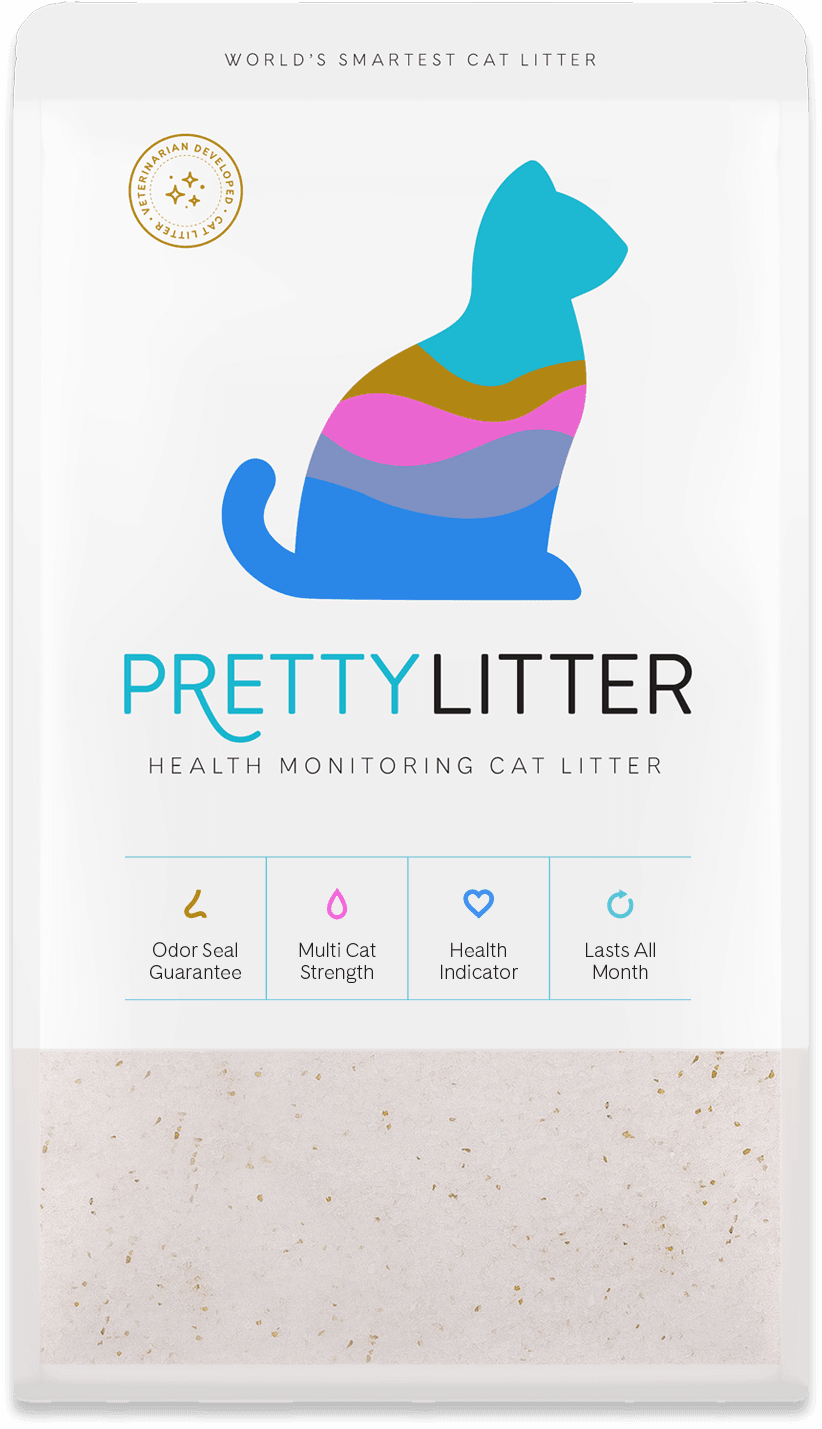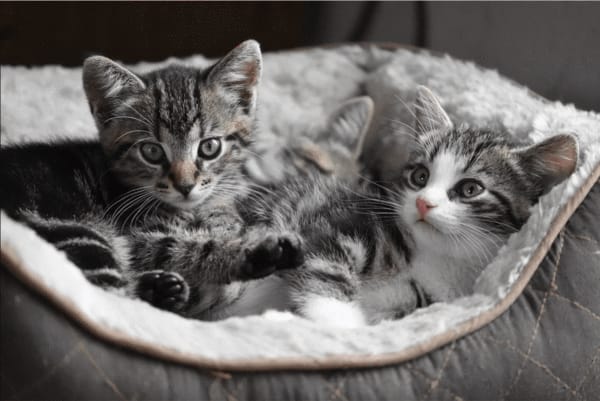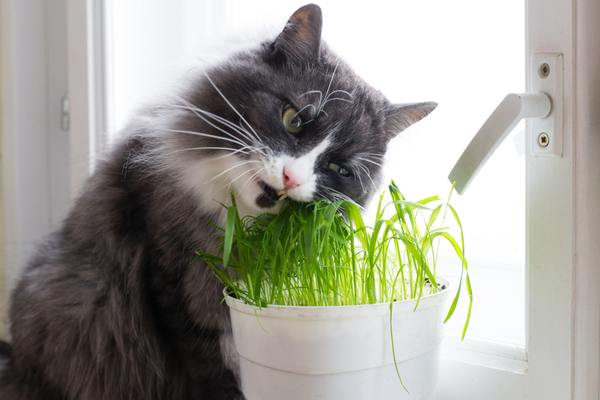January 28, 2025 |8 min read
Why Cats Mark Territory: Understanding the Behavior

Written by

Cats are fascinating creatures, full of quirks and habits that sometimes leave their owners scratching their heads. One such behavior that often confuses pet parents is territorial marking. Whether it’s a spray of urine in an unusual place, a swipe of claws across furniture, or persistent rubbing against objects, cats mark territory for reasons rooted in their instincts.
To better understand this behavior and how to manage it, let’s dive into why cats mark their territory, what it looks like, and how you can create harmony at home.
Understanding Cat Marking Behavior
Territorial marking, or urine marking, is a way cats communicate with their environment and other animals. When a cat marks territory, it claims ownership, creates a sense of security, and establishes boundaries.
Cats have scent glands on their paws, cheeks, and flanks, and they use these to leave subtle deposits of pheromones. These chemical markers send signals to other cats, indicating, “This is my space.”
By understanding the motivations behind cat marking territory, pet parents can better address the root causes and reduce unwanted behaviors.
Why Do Cats Mark Their Territory?
Cats engage in marking for several reasons, most of which relate to instinctual behaviors or environmental changes. Some common triggers include:
-
Defining Their Space: Cat scent marking helps a cat feel in control of their surroundings. This is especially important if they feel their territory is being threatened, which can be triggered by other pets or outdoor cats nearby.
-
Stress or Change: Environmental shifts—like new furniture, visitors, or moving to a new home—can prompt marking behavior as a way to cope.
-
Mating Instincts: Intact male cats and female cats often mark as part of their reproductive cycles. For instance, during a cat heat cycle, urine marking becomes a way to attract mates.
By understanding the reasons behind territorial marking, you can begin to address the root cause and support your cat’s needs.
Cat Litter That Prioritizes Their
Health & Your Happiness.
to get your first bag for only $14.99
Common Signs Your Cat Is Marking Territory
Cats don’t always leave their mark in obvious ways, but there are several telltale signs of marking behavior to watch for. Here are some signs of cats marking territory:
Physical Marking
-
Scratching: Cats use scratching as both a way to sharpen their claws and leave visual and scent markers. You might notice scratched furniture, carpets, or even door frames.
-
Urine Marking: Unlike normal bathroom behavior in the litter box, cat urine marking is more targeted and often appears on vertical surfaces like walls or curtains. The urine itself has a stronger odor due to concentrated pheromones.
-
Scent Rubbing: Cats rub their cheeks or bodies against furniture, people, or other objects to leave pheromones from their scent glands.
-
Cat Spraying: A common form of urine marking, cat spraying often occurs when a feline feels stressed or insecure or responds to nearby animals. Spraying can be a response to environmental changes, unneutered hormonal drives, or perceived threats to their territory.
Behavioral Changes
-
Increased Anxiety: Cats experiencing stress may begin to mark more frequently, especially if there’s a conflict with other pets.
-
Territorial Aggression: If your cat feels its space is being invaded, signs of stress, such as hissing or growling, can accompany marking behaviors.
-
Frequent Peeing: If your cat urinates frequently outside its litter box, it could be a sign of marking.
Recognizing these signs early can help you determine if your cat’s marking is a behavioral response or related to an underlying health problem.
How to Manage and Prevent Unwanted Marking
Managing marking behaviors often requires a combination of environmental adjustments, behavioral interventions, and litter box solutions. With the right approach, you can significantly reduce the frequency of urine marking while addressing the underlying triggers.
Solutions for Litter Box Issues
Sometimes cats mark because they’re unhappy with their litter box situation. To address this, you can do the following:
-
Keep It Clean: Scoop waste daily and replace litter regularly to ensure a fresh environment. Cats are sensitive to odors, and a dirty box can drive them to mark elsewhere.
-
Provide Multiple Boxes: In multi-cat households, offer one litter box per cat plus one extra. This reduces competition and conflict over shared spaces.
Environmental Adjustments
A few changes around your home can make a big difference. Here are some of the things that you can add to your household items for your cat:
-
Use Pheromone Products: Diffusers or sprays can help create a calming atmosphere, reducing the urge to mark, or even the instance of your cat peeing on clothes.
-
Add Scratching Posts: Giving your cat designated scratching areas can redirect their instincts away from furniture.
-
Provide Vertical Spaces: Cat trees or shelves allow cats to claim their own place while reducing territorial disputes.
Behavioral Interventions
When your cat’s marking behavior goes beyond typical territorial instincts, behavioral interventions can make a significant difference. Addressing the root causes, whether hormonal or stress-related, is key to reducing unwanted marking and creating harmony in your home. Here are two impactful approaches to help manage this behavior:
-
Spaying or Neutering: If your cat isn’t already spayed or neutered, this procedure can significantly reduce marking caused by hormonal drives.
-
Consult a Vet: Persistent marking may indicate an underlying issue, such as a medical condition or extreme stress. Your vet can provide tailored advice and solutions.
Taking these steps can help prevent marking behaviors while keeping your cat happy and secure.
How PrettyLitter Can Help Monitor Your Cat’s Health
Addressing urine marking is often about understanding your cat’s health and habits.
By using PrettyLitter, you’re not just managing your cat’s litter box—you’re creating a cleaner, healthier home for both you and your feline companion.
Here’s how PrettyLitter can help monitor your cat’s health:
-
Indicates Health Issues: PrettyLitter’s color-changing crystals alert you to potential health problems by identifying changes in your cat’s urine.
-
Reduces Odors: Our advanced odor control helps maintain a clean, comfortable environment for your cat.
-
Supports Consistent Monitoring: Regular observation of your cat’s litter can reveal patterns in their health and behavior, helping you address concerns early.

Supporting Your Cat’s Natural Instincts
Understanding why cats mark their territory is the first step toward addressing and preventing unwanted marking behavior. Whether it’s due to stress, environmental changes, or instinctual drives, your cat is simply communicating their needs.
By creating a cat-friendly home, addressing potential health issues, and using tools like PrettyLitter to monitor their habits, you can build a stronger bond and a happier environment for your furry friend.
Let’s face it: cats mark because it’s their natural way of navigating the world. With the right care and attention, you can ensure their instincts don’t disrupt the harmony of your home.
Sources:
- Fear Free Happy Homes. Scents and Scentsability: Feline Senses of Smell and Taste. https://www.fearfreehappyhomes.com/scents-and-scentsability-feline-senses-of-smell-and-taste/
- PetMD. Cat Spraying: Why Cats Do It and How to Stop It. https://www.petmd.com/cat/general-health/cat-spraying-why-cats-do-it-and-how-to-stop-it
- Cats Protection. Cat Spraying. https://www.cats.org.uk/help-and-advice/cat-behaviour/spraying







